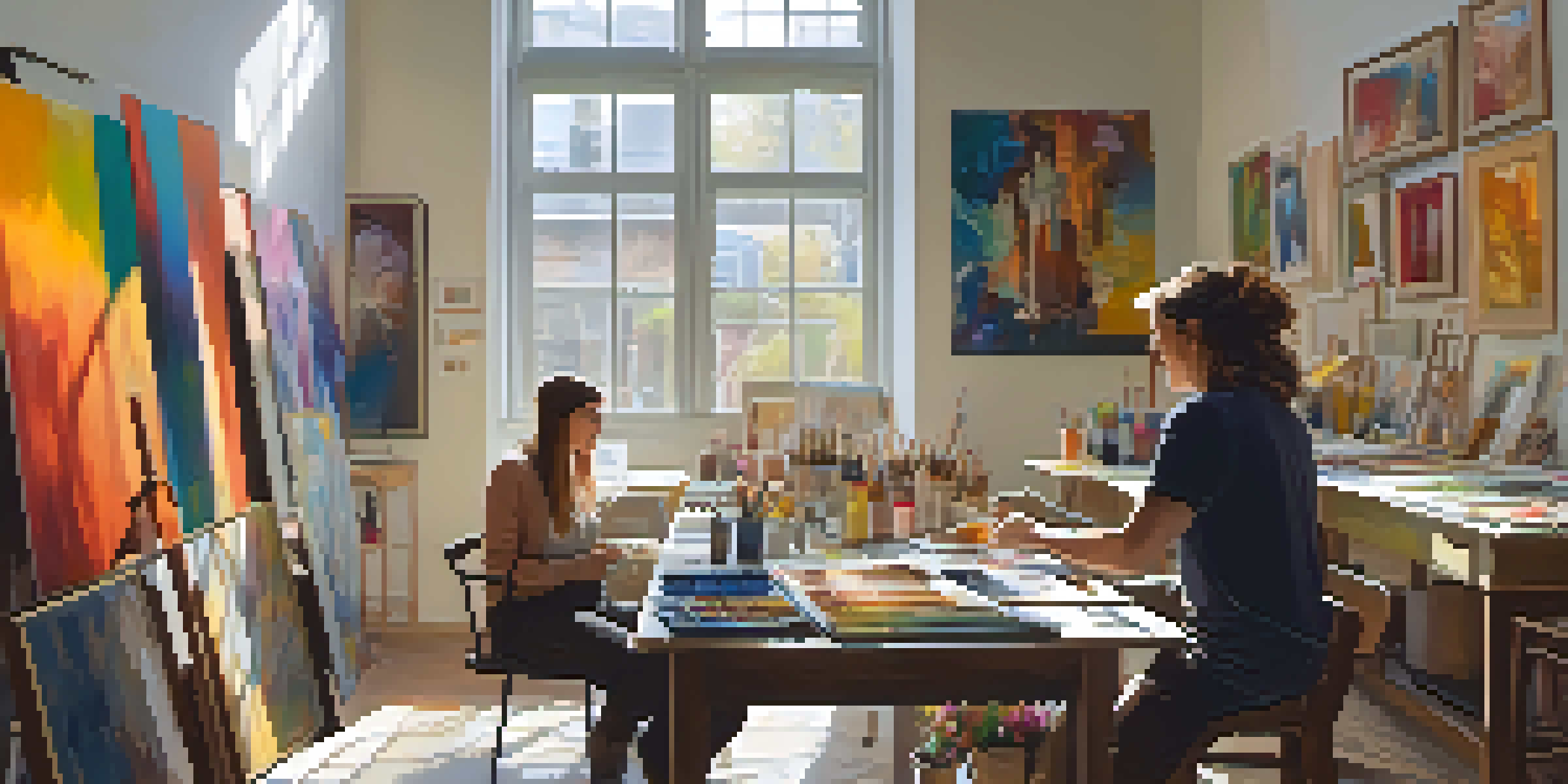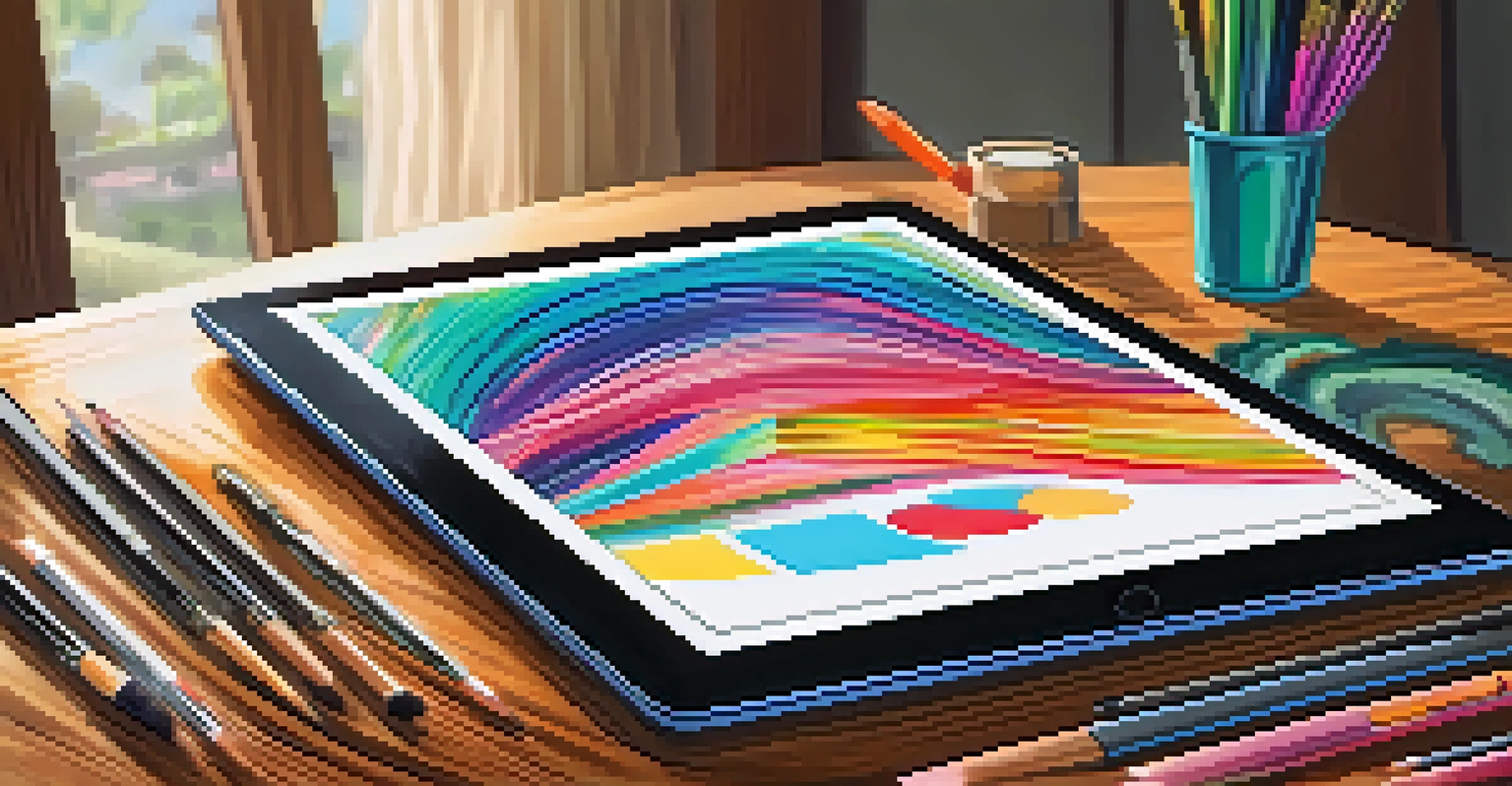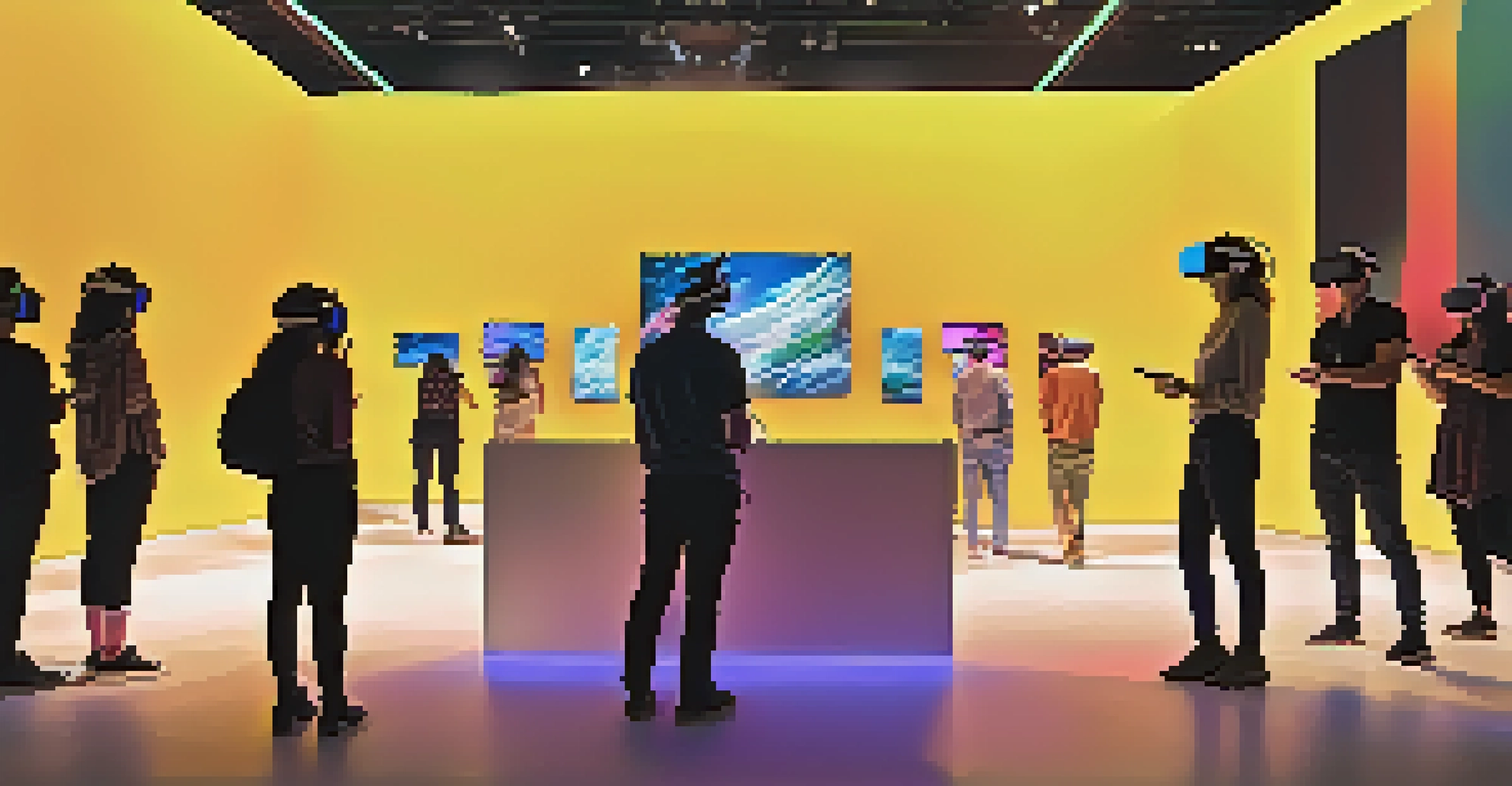Art Criticism in the Digital Age: Challenges and Opportunities

The Shift from Traditional to Digital Art Criticism
Art criticism has undergone a significant transformation with the rise of digital platforms. Unlike traditional formats, which relied heavily on print media and a select group of critics, the digital age has democratized art discourse. Now, anyone with an internet connection can share their thoughts through blogs, social media, and video platforms.
Art is not a mirror held up to reality but a hammer with which to shape it.
This shift has opened up the field, allowing diverse voices to emerge and share their perspectives on art. Emerging artists and critics from different backgrounds can now have their work showcased, providing a richer tapestry of opinions and interpretations. However, this also means that the quality and depth of criticism can vary significantly, making it crucial for audiences to discern credible sources.
Related Resource
As we navigate this new landscape, the challenge lies in maintaining the rigor and depth that traditional art criticism offered while embracing the accessibility and immediacy of digital platforms. The balance between inclusivity and quality is delicate, but it offers an exciting opportunity for evolution in art critique.
The Role of Social Media in Art Criticism
Social media platforms like Instagram and Twitter have become vital arenas for art criticism today. Artists share their work instantly, and critics can respond just as quickly, creating a dynamic conversation around art. These platforms allow for immediate feedback, which can be both a blessing and a curse.

On one hand, social media fosters a community where artists and critics interact directly, often blurring the lines between creator and evaluator. This interaction can lead to more nuanced discussions and a deeper understanding of the art being critiqued. However, the fast-paced nature of social media can sometimes prioritize sensationalism over thoughtful analysis, making it essential for critics to maintain a level of integrity.
Digital Platforms Democratize Art Critique
The rise of digital platforms has opened up art criticism to a wider audience, allowing diverse voices to contribute to the discourse.
Ultimately, social media has transformed the landscape of art criticism by creating a space where dialogue flourishes. Critics must navigate this environment carefully, using it as a tool for engagement while ensuring that their critiques remain insightful and constructive.
The Impact of Online Accessibility on Art Criticism
One of the most significant advantages of the digital age is the accessibility it provides to art criticism. Online platforms allow anyone to access critiques, reviews, and discussions around art from the comfort of their home. This opens the door for art enthusiasts who may not have had access to traditional art criticism due to geographical or economic barriers.
The best way to predict the future is to create it.
With a click, individuals can read diverse opinions on exhibitions and artworks from critics around the globe. This global perspective enriches the conversation and allows for a multitude of interpretations, fostering a more inclusive dialogue about art. However, this abundance of information can also lead to information overload, leaving readers unsure of where to focus their attention.
Related Resource
As a result, it becomes increasingly important for critics to find ways to stand out and provide value in their analysis. Engaging storytelling, well-researched insights, and unique viewpoints can help guide audiences through the vast sea of art commentary available online.
Navigating the Challenge of Credibility
In the digital age, one of the pressing challenges in art criticism is establishing credibility. With so many voices contributing to the conversation, discerning which critics are knowledgeable and trustworthy can be daunting. This is especially true for emerging critics who may struggle to gain recognition amidst a flood of opinions.
Audiences are faced with the task of evaluating the expertise and biases of various critics, which requires a level of media literacy that not everyone possesses. Critics, therefore, must work diligently to build their reputation through consistent, well-informed, and thoughtful critiques. Transparency about their backgrounds and perspectives can also help foster trust with their audience.
Navigating Credibility in Online Criticism
With numerous opinions available, establishing credibility in art criticism is essential for critics and requires audiences to develop media literacy.
As the art world continues to evolve, the importance of credible voices becomes increasingly crucial. Critics who prioritize integrity and authenticity in their evaluations will likely resonate more with audiences seeking genuine insights.
The Evolution of Aesthetic Standards in Digital Criticism
The digital age has not only changed how we critique art but also the standards by which we judge it. In a world where art can be shared instantly, aesthetic preferences can shift rapidly, influenced by popular trends and viral content. Critics must stay attuned to these evolving tastes while also holding true to established criteria of quality and depth.
This evolution can create tension between traditional artistic values and contemporary aesthetics, prompting critics to reassess what constitutes 'good' art in a digital context. For example, the rise of digital art forms challenges traditional mediums and raises questions about authenticity and originality. Critics must adapt their evaluations to reflect these changes, ensuring they remain relevant in today’s art landscape.
Related Resource
Ultimately, this requires a nuanced understanding of both historical and contemporary contexts. Critics who can navigate these shifting standards will not only provide valuable insights but also contribute to a broader understanding of what art can be in the digital age.
Art as a Collaborative Experience in the Digital Realm
Another exciting opportunity presented by the digital age is the potential for collaboration in art criticism. Online platforms encourage artists, critics, and audiences to engage in a two-way dialogue, where feedback can shape artistic practice. This collaborative environment can lead to innovative ideas and new forms of artistic expression.
Critics are now increasingly involved in the creation process, offering insights that can influence an artist's work even before it is completed. This synergy can yield richer, more dynamic art that resonates deeply with audiences. Moreover, collaborative projects between critics and artists can foster community and engagement, bridging gaps that traditional criticism may have overlooked.
Future Innovations in Art Criticism
Emerging technologies like AR and AI promise to transform how critics engage with art, but they also challenge the essential human element of critique.
As this collaborative spirit continues to grow, it encourages a sense of shared ownership over the art discourse. Critics who embrace this opportunity can enhance their critiques and contribute to a more vibrant artistic ecosystem.
Looking Ahead: The Future of Art Criticism
As we look to the future, it's clear that art criticism will continue to evolve alongside technological advancements. The rise of augmented reality (AR) and virtual reality (VR) offers exciting new ways for critics and audiences to engage with art. These technologies can create immersive experiences that deepen understanding and appreciation for various artworks.
Additionally, the integration of artificial intelligence (AI) in art analysis could provide new tools for critics to interpret and critique art more effectively. However, this innovation also raises important questions about the role of human insight in criticism. Will AI be able to capture the emotional nuances and cultural contexts that a human critic can?

The future of art criticism lies in finding a balance between embracing these technological innovations and preserving the human touch that is essential in understanding art. As critics navigate these changes, they will play a vital role in shaping the discourse and ensuring that art remains a rich and meaningful part of our lives.